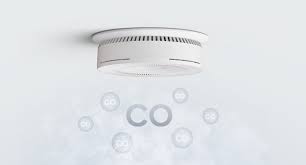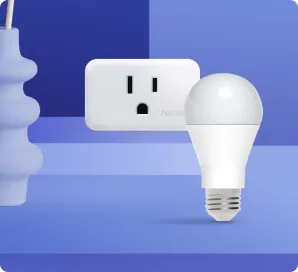A carbon monoxide detector is a device designed and engineered to detect carbon monoxide gas presence in your surroundings. The device will prevent carbon monoxide poisoning with early detection. CO can lead to health hazards, causing lung problems, and also death. Moreover, it clings to the hemoglobin in your RBCs, causing major toxic complications. A carbon monoxide detector is specifically designed to warn about the unusual build-up of CO in your residential and commercial places. These higher levels of CO may occur from improperly maintained, installed, or used fuel-burning appliances.
Is Carbon Monoxide Heavier than Air?
In this article, we answer all of your questions, from “What is a Carbon Monoxide Detector?’ all the way to “Is carbon monoxide heavier than air?.” We will discuss the CO detectors in detail, starting from its history, effectiveness, and real-life examples to other details.
History, Development and Current Trends of Carbon Monoxide Detectors
Starting with some history of why the CO sensor was created, here is some information on what brought the worry to light in the first place. When were Carbon Monoxide Detectors Invented? The earliest version of a carbon monoxide detector was invented in 1925 by Chester Gordon and James Lowe. They were the employees of the American Telephone and Telegraph Company. The device was to assist commercial workers in detecting toxic gas in confined spaces like manholes. After Aristotle studied the potentially fatal effects of carbon monoxide poisoning, in 1800, Scottish chemist William Cruikshank discovered the toxic fumes. Hence, the demand for CO detectors was from industrial sectors. The Gas Record for April 13, 1921, shows the development of a “sensitive carbon monoxide detector” by G.H. Burrell. Later, a combined device – CO and smoke detector launched in the market in 1996.

The smoke and carbon monoxide alarm market will reach a CAGR (Compound Annual Growth Rate) of 8.8% during the forecast period. The global market has noticed estimated revenue of USD 2. 52 billion by 2022 and is expected to exceed USD 5.38 billion by the end of 2032.
Effectiveness of Carbon Monoxide Detector
To answer the question, “What is a Carbon Monoxide Detector?” you must know about its features and benefits.
Accurate Alarming Features
The carbon monoxide sensors have accurate alarms to detect accumulating CO levels in a surrounding. When CO levels accumulate highly, the alarm will detect immediately before people witness symptoms. Some detectors have alarms that have electrochemical sensing features, which alert people quickly to get rid of harm.
Commonly Asked Questions – Does carbon monoxide rise? – Sometimes. It rises in warm air conditions. If it is not unusually warm, the carbon monoxide will remain at any level throughout your home. This is why it is important to read the instructions on where to put your detector within your home. Each make and model can have different placement instructions.
Enhanced Stability in Changing Environmental Conditions
Carbon monoxide sensors are stable against environmental changes such as a rise in temperature and humidity. It prevents false alarms and protects internal components from potential damage. Therefore, the device guarantees that it will remain stable and reliable in all seasons and regardless of the weather outside.
More Commonly Asked Questions – Do carbon monoxide detectors detect natural gas? The answer is a straight no! It does not detect natural gasses.
Major Considerations to Invest in Carbon Monoxide Sensor
- Maintenance
Usually, CO sensors need minimal maintenance. You just need to use a dry cloth to wipe the dust from the detector regularly. Make sure to replace its battery twice a year.
- Sustainability
It is better to go for sustainable sensors that do their job and don’t cause any harm to the environment. Moreover, the sensors must have a good warranty period.
- Cost-effectiveness
You will find CO sensors available in various price ranges. The cost varies based on the features and specifications. Invest in the right sensor which meets your building’s needs.
Note: Is carbon monoxide heavier than air? – No, carbon monoxide is lighter than air.
User Tips on Carbon Monoxide Sensors
Confused about Where to place carbon monoxide detector? Follow the best practices below;
- CO alarms must be installed in a central location on the property
- Installment must be done following the required applicable laws, codes, or standards.
- For better protection, interconnect all CO alarms throughout the property.
Real-world examples of Carbon Monoxide Detector
Carbon Monoxide (CO) Detectors are used for various applications such as residences, public places, malls, retail stores, underground garages, tunnels, engine repair shops, engine test benches, loading bays, etc.
Success Stories – Carbon Monoxide Detector Saved A Senior’s Life
A senior with a physical disability lived alone under LIHEAP assistance. She has to pay for her home heating bills early during winter. Later that winter, the carbon monoxide detector of her house failed. She called the fire department to inspect the situation. The firefighters turned off the furnace because an alarm detector showed high carbon monoxide levels when the furnace was operating.
The next day, she consulted her local LIHEAP agency. The agency immediately sent a technician to fix it. Within a few minutes of inspection, he found fatal carbon monoxide levels. The LIHEAP agency installed a new furnace using LIHEAP crisis funds. This was a life-saving event.
Frequently Asked Common Questions
Q1) How long will a CO sensor work?
The average lifespan of a CO sensor is 5 to 7 years. You must check out the user manual to know more about the warranty. Even if you replace the battery, it won’t last forever.
Q2) How will I know when the CO sensor’s battery is down?
If the detector’s battery is running low, you will likely hear short beeps every minute. To warn of dangerous CO levels, most detectors beep four or five times in succession about every four seconds. Don’t confuse the alarm of CO gas with its low battery warnings!
Q3) How quickly a CO sensor will detect the gas?
Standard carbon monoxide detectors can take an hour to alert at concentrations of 70 ppm or less. The CO detector will respond to extremely high concentrations of 400 ppm or more in just four minutes.
A Comparative Analysis of Carbon Monoxide Gas Sensing to Particle Smoke Detection in Residential Fire Scenarios
Recent research suggests that carbon monoxide (CO) detection works better than photoelectric detectors at detecting smoldering fires in the home. The results of this study were compared with large-scale experimental data in which carbon monoxide concentrations and smoke alarm responses were collected in experiments on smoldering polyurethane foam furniture and furniture mockups. Based on the analysis of the data, the CO detection sensor has proven complementary to particulate smoke detectors but does not appear to have reached a level that would indicate it as a necessary requirement.
Conclusion
This is all about the importance of carbon monoxide detectors of various building types. Since its invention, it has become a valuable device to get rid of the toxic CO in the surroundings and save lives. In the future, the CO sensors will be equipped with more advanced specifications as per the customer’s requirement. Overall, it is a must-have device in residences and commercial places.
Top CO Detectors
2GIG eSeries Enhanced CO Detector
It is a best-in-class wireless connected carbon monoxide sensor equipped with 2GIG Security Panels.
- Activates 85dB alarm sounder
- 2GIG GC2e or GC3e Security Panel
- 10-year sensor life and battery life
- Price – $106.00
Bring home this product and save your family from toxic CO spread!
Ecolink Z-Wave Plus FireFighter Smoke/CO Audio Sensor, Gen5
This is a next-gen smoke and CO detector with built-in microphones.
- Wireless alarm panels
- Battery warranty up to 5 years
- Mounted up to 6 inches
- Price – $40.95
Invest in this advanced CO/smoke audio sensor to get immediate alerts!
Aeotec Z-Wave Plus Siren 6, Gen5
It is a great indoor sensor with a 400mAh battery. It emits audio and visual alerts when connected with Z-Wave devices.
- Set 15 different alert tones.
- Multiple built-in strobe LED lights.
- Constantly charged built-in backup battery.
- Price – $79.99
Buy this extraordinary sensor at the best price!


















